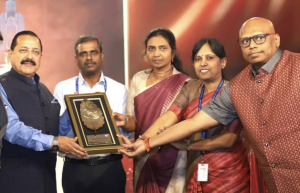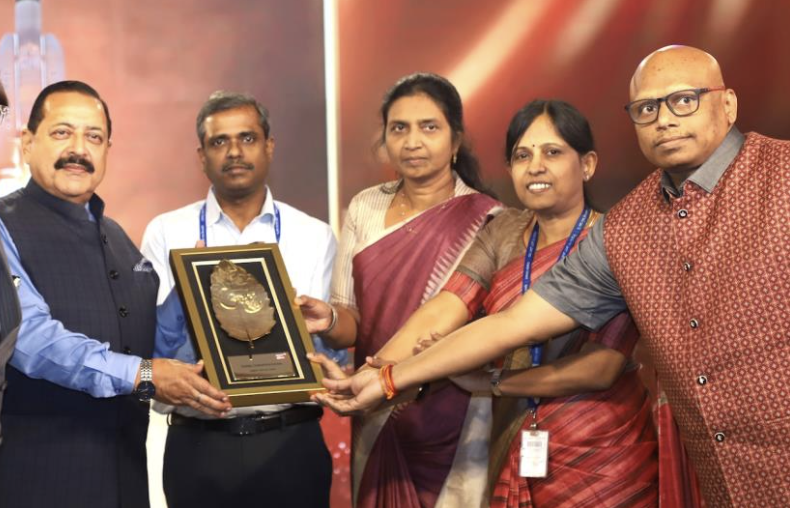NEW DELHI:On the 21st of this month, the “Gaganyaan” Test Vehicle Space mission (TV-D1), also known as the “Gaganyaan” Test Vehicle Development flight, is slated to launch. Dr. Jitendra Singh, Union Minister of State (Independent Charge) for Science and Technology, Personnel, Public Grievances, Pensions, Atomic Energy, and Space, made this announcement in front of the audience today during a programme honouring ISRO scientists who worked on the Chandrayaan Mission. By 2024, ISRO hopes to launch both manned and unmanned spacecraft thanks to the Crew Escape System, a critical component of the “Gaganyaan” mission, which will also be put to the test. The test will be carried out at Sriharikota’s Satish Dhawan Space Centre. The astronauts will travel to orbit on the Gaganyaan expedition in the Crew Module. A crew module will be sent into space for the test, returned to Earth, and then recovered after touching down in the Bay of Bengal. Personnel from the Indian Navy have already begun practise operations to recover the module. The Minister was informed that if this test is successful, it will pave the way for the first unmanned “Gaganyaan” mission and ultimately a manned journey to low Earth orbit. The female robot astronaut “Vyommitra” will go on a test flight next year before the final manned “Gaganyaan” mission, he claimed. The Gaganyaan project aims to launch a human crew into a 400 km orbit and return them safely to land in Indian sea waters as a demonstration of human spaceflight capability. The development of numerous essential technologies, such as human rated launch vehicles for carrying crew safely into space, life support systems to provide crew with an environment similar to that on Earth while they are in space, crew emergency escape provisions, and evolving crew management aspects for crew training, recovery, and rehabilitation, are prerequisites for the Gaganyaan mission. India is one of the top five countries in the world when it comes to space exploration, according to Dr. Jitendra Singh. “India just made history by becoming the first country to land on the virgin south pole section of the lunar surface. India’s ambitious space exploration plan has left a clear message that we are one of the most scientifically sophisticated nations in the field of Space Science and Technology with the launch of Aditya -1, which is the first space-based Indian mission to study the Sun, he added. Dr. Jitendra Singh gave full credit to Prime Minister Shri Narendra Modi for “unlocking” India’s space sector and creating an enabling environment so that India’s enormous potential and talent could find an outlet and prove itself to the rest of the world, allowing India’s space scientists to validate the dream of their founding father Vikram Sarabhai. “After the opening up of the Space sector by Prime Minister Shri Narendra Modi in June 2020, the number of Space Startups sky-rocketed from merely 4 to 150 Startups,” he stated. India’s space missions, he claimed, are made to be economical. Dr. Jitendra Singh stated that virtually every household in India has been impacted by space technology. He was referring to applications of space technology to various sectors like railways, highways, agriculture, water mapping, smart cities, telemedicine, and robotic surgery, which brought “Ease of Living” for the average person. “During PM Modi’s tenure of nine years, India’s disaster capabilities have become world class and we are providing Disaster Forecasts for neighbouring countries as well,” he stated. According to Dr. Jitendra Singh, ISRO is the perfect example of India’s Naarishakti, with women scientists spearheading many of the different activities in space research missions. The Union Minister presented awards to ISRO scientists Dr. Veeramuthuvel, Project Director of Chandrayaan-3, Ms. K. Kalpana, Associate Project Director of Chandrayaan-3, M. Shrikanth, Mission Director of Chandrayaan-3 and Aditya L1, and Ms. Nigar Shaji, Project Director of Aditya L1.


